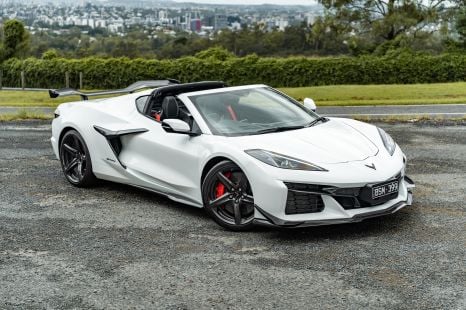

William Stopford
2025 Chevrolet Corvette Z06 review
2 Months Ago
The new Ford Mustang GT still packs a howling V8 and can still be had with a manual, though its high-tech interior no longer feels retro.
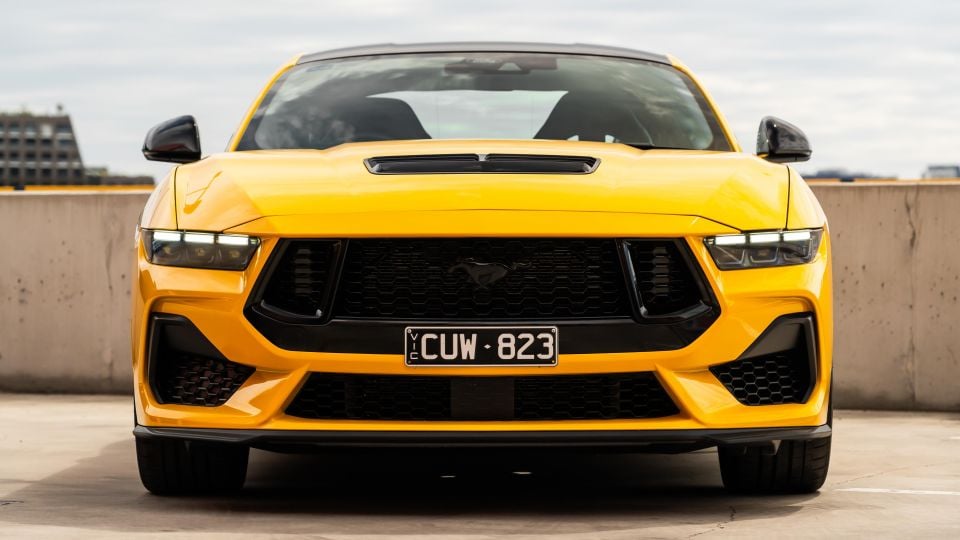
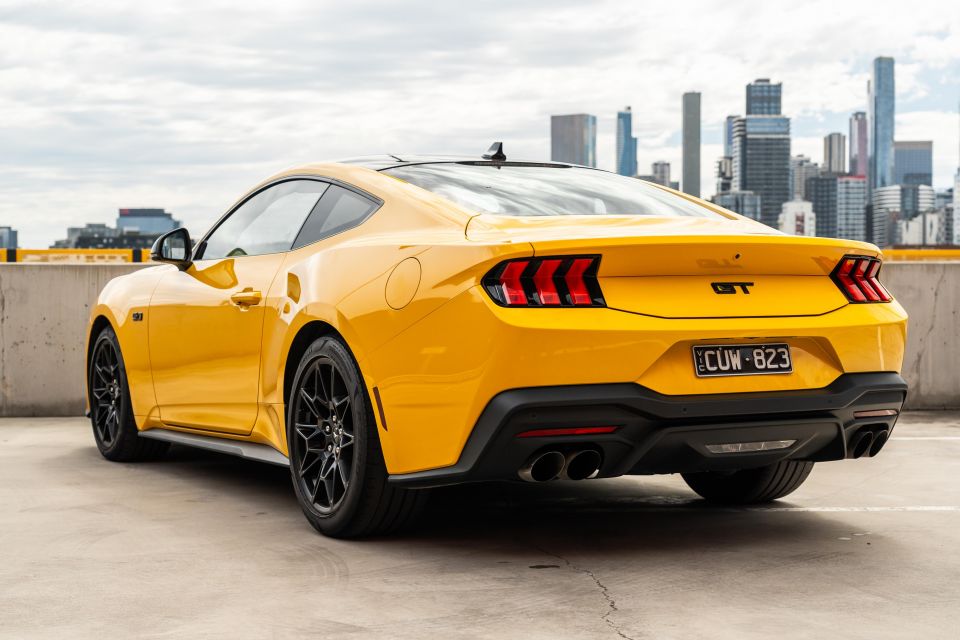

Quickly see how this car stacks up against its competition. Select any benchmark to see more details.
Where expert car reviews meet expert car buying – CarExpert gives you trusted advice, personalised service and real savings on your next new car.
Ford’s iconic pony car lives on for another generation.

After numerous delays, first customer deliveries of the seventh-generation S650 Mustang began in Australia late last year. Nonetheless, the latest pony car brings fresh looks inside and out, as well as new tech, while retaining its bellowing Coyote V8 engine. Yes, that’s right, the bent eight is still available, as is a manual transmission.
With all 1000 examples of the track-focused Mustang Dark Horse flagship coupe selling out, the range has now been pared back to just the four-cylinder EcoBoost and V8-powered GT variants, and only the GT remains available as a convertible.
On test here is the iconic Mustang GT Fastback, powered by a 5.0-litre V8 and mated to either a six-speed manual or 10-speed automatic transmission. We’ve sampled both transmission types this time around.
It’s worth noting the vehicle pictured throughout this review is an MY24 example featuring the previously optional Black Pack, which is no longer available for MY25 Mustangs.
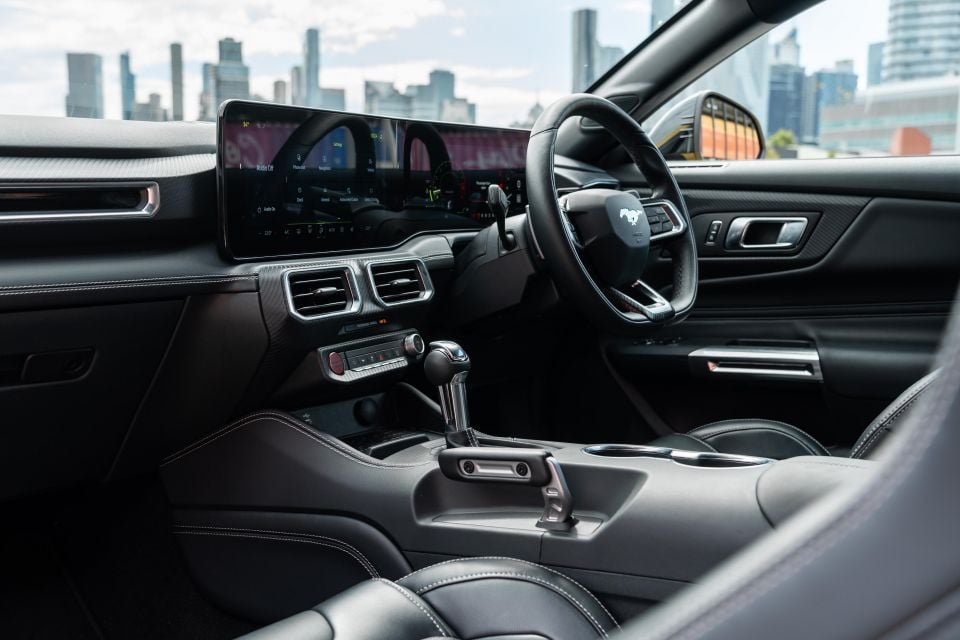
Ford Australia has confirmed no MY25 Mustangs have arrived Down Under yet, but they should be landing soon pending shipping delays.
Does the new Mustang remain true to its hallowed forebears, or has Ford ruined the formula that made it one of Australia’s most popular sports cars? Read along to find out.
It’s not cheap, but Ford can really charge what it wants because there’s no longer a like-for-like rival for the V8-powered Mustang GT.

After yet another price hike for MY25, the Mustang now starts at about $67,000 before on-road costs for the EcoBoost Fastback coupe, rising to almost $79,000 plus on-roads for the V8-powered GT Fastback manual tested here (plus $3000 for the auto) and topping out at nearly $88,000 before on-roads for the auto-only GT Convertible flagship.
The next most affordable V8-powered sports car is the Chevrolet Corvette, which starts at $182,000 before on-roads – $100,000 more than the Mustang GT Fastback auto. This is a completely different type of proposition, however.
Even compared to rear-wheel drive six-cylinder coupes like the BMW M2 ($126,300 before on-roads), Nissan Z Nismo ($94,360 before on-roads), and Toyota GR Supra GT manual ($86,295 before on-roads), the Mustang GT still stacks up as better value from a money-to-horsepower perspective.
| Model | Price | Price increase (over MY24) |
|---|---|---|
| 2025 Ford Mustang EcoBoost Fastback auto | $66,990 | $2000 |
| 2025 Ford Mustang GT Fastback manual | $78,990 | $1988 |
| 2025 Ford Mustang GT Fastback auto | $81,990 | $1088 |
| 2025 Ford Mustang GT Convertible auto | $87,667 | $915 |
If you want to see how the Ford Mustang lines up against the competition, check out our comparison tool
Buy your new car without the stress. It's fast, simple and completely free.

Great service from Travis and team, second time I have used this business would not hesitate to recommend them to anyone
Craig C.
Purchased a Ford Ranger in Sunshine Coast, QLD
CarExpert helped Craig save $7,224 on his Ford Ranger, now let us save you on your next new car.
Get your BEST priceThe Mustang GT has always commanded plenty of street cred and if anything he new model has even more road presence, especially in this now-discontinued Yellow Splash exterior paint colour. Many people snapped their heads around to take a look when I drove past.
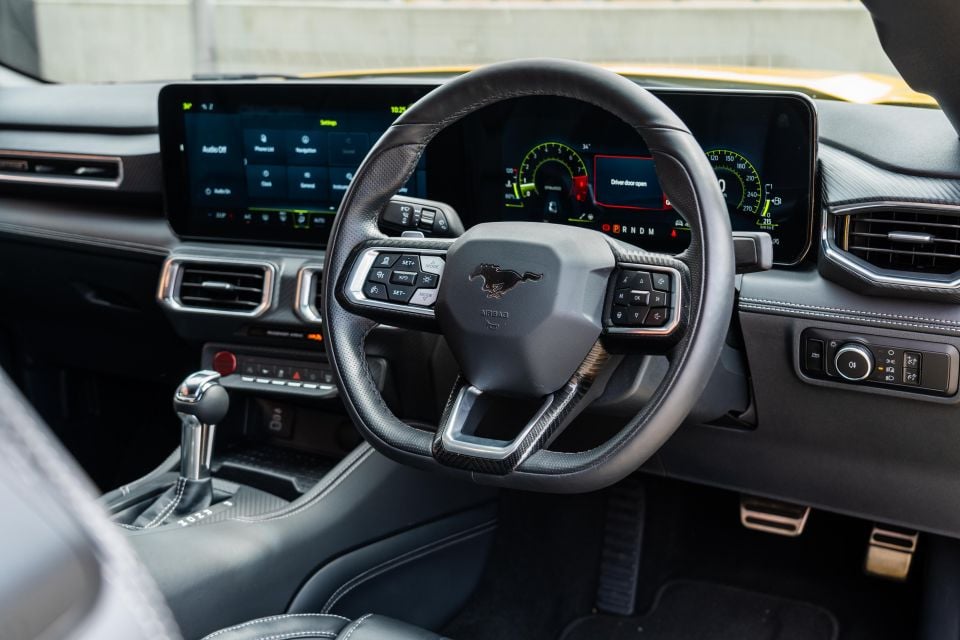
The big doors make it easy to get into this low-slung coupe, but they’re long so you need to allow a bit of space to swing them open far enough. If you park in a tight spot you have to contort yourself during ingress and egress.
Once you’re in the driver’s seat you sit very low, which is how it should be in a sports car, but despite this there’s still good outward visibility over the long bonnet. The optional Recaro seats add to the sporty character as they hug you in super tight and are very supportive.
They offer six ways of electric seat base adjustment, including a great amount of thigh support, though the backrest is manually adjusted. This isn’t the end of the world as you can easily set your desired backrest position with the lever.
Some things you miss out on with the Recaro seats when compared to the standard seats, however, is heating and ventilation. Plus the seat belt rubs on the side of the backrest which makes an annoying squeaky sound.
Ahead of the driver is a big leather-wrapped steering wheel that fills your hands. It offers a great amount of tilt and reach adjustment, meaning people of different sizes and statures will be able to find a comfortable driving position.

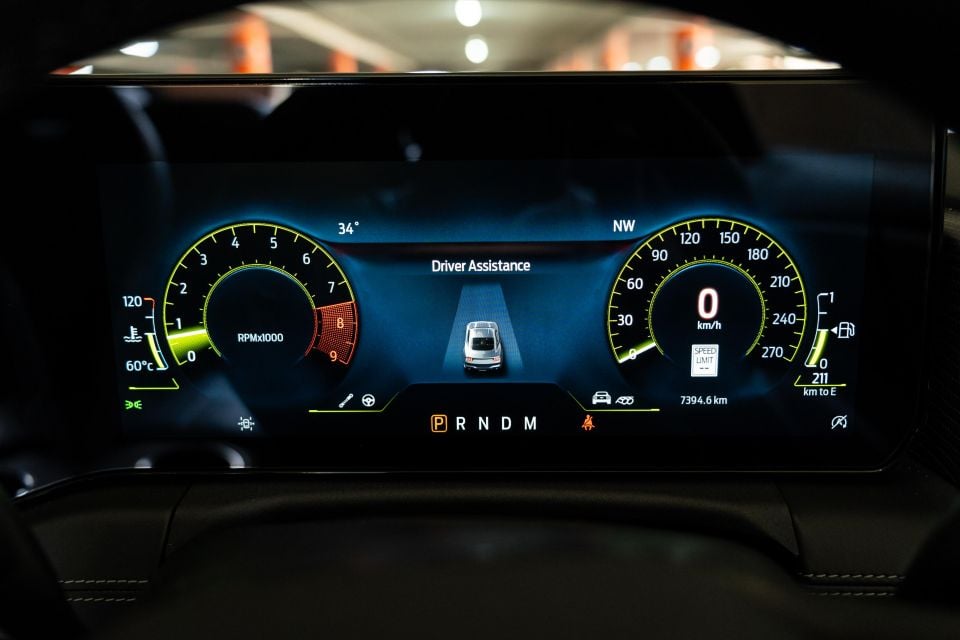
I appreciate the number of buttons on the steering wheel, and how clearly labelled they are. There aren’t many cars that allow you to change not only the driving modes, but also the steering wheel feel, directly on the steering wheel.
While it may polarise, I’m a fan of the new wraparound display setup that incorporates both the digital instrument cluster ahead of the driver and the central touchscreen infotainment system. It makes you feel like you’re in a cockpit, even if it does lose the retro-ness of the previous-generation Mustang.
The 12.4-inch digital instrument cluster is bright and clear, plus you can cycle through a range of different informative pages in the central section.
There are also a number of different views you can select from, including some cool-looking options that replicate classic Mustangs, but unfortunately these displays don’t have digital speedometer readouts.
Moving across, the 13.2-inch multimedia touchscreen is large and driver-oriented. I was able to reach and interact with all parts of the screen without leaning out of my seat, which is fantastic from an ergonomics standpoint.
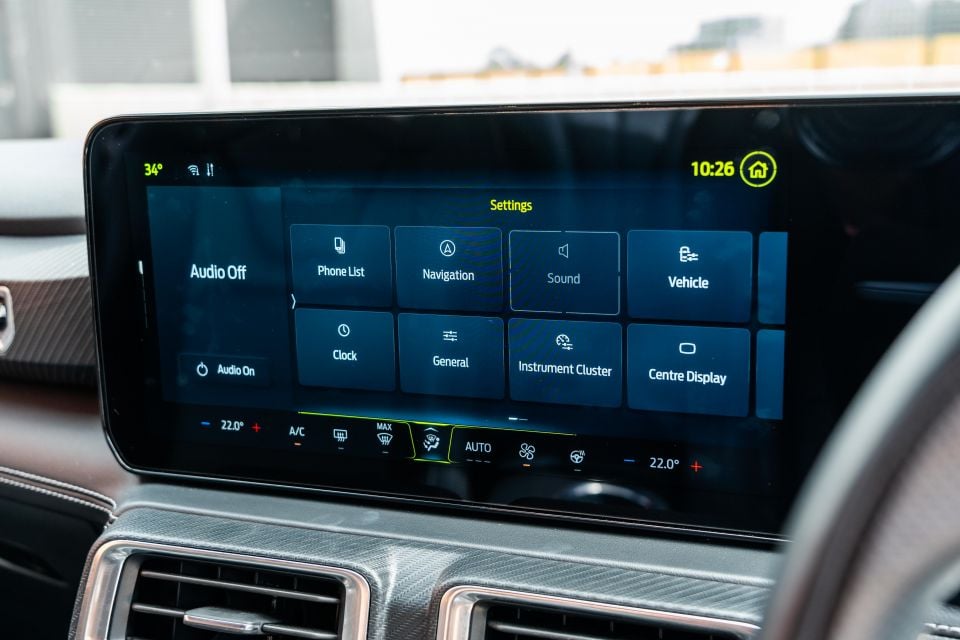
Thankfully, the menu interface is easy to understand and hard to get lost in. There are convenient virtual shortcut buttons on the screen for the home page and Apple CarPlay, if connected, among others.
As standard, there’s both wired and wireless Apple CarPlay and Android Auto. With my iPhone 15 Pro Max connected wirelessly I didn’t experience any dropouts whatsoever, which is great.
There’s also a wireless phone charger that’s conveniently located on at the front of the centre console. It did charge my phone for the most part, but given it’s not ventilated it tended to overheat it on longer drives.
It is a little frustrating Ford has integrated the climate controls into the touchscreen, as physical knobs and dials are so much more intuitive.
Thankfully, however, most of the climate control functions are always present at the bottom of the touchscreen. You can easily change the set temperature and turn on auto mode, among other functions, though if you want to change the air-flow direction or have the air recirculating, you need to open the climate control menu.
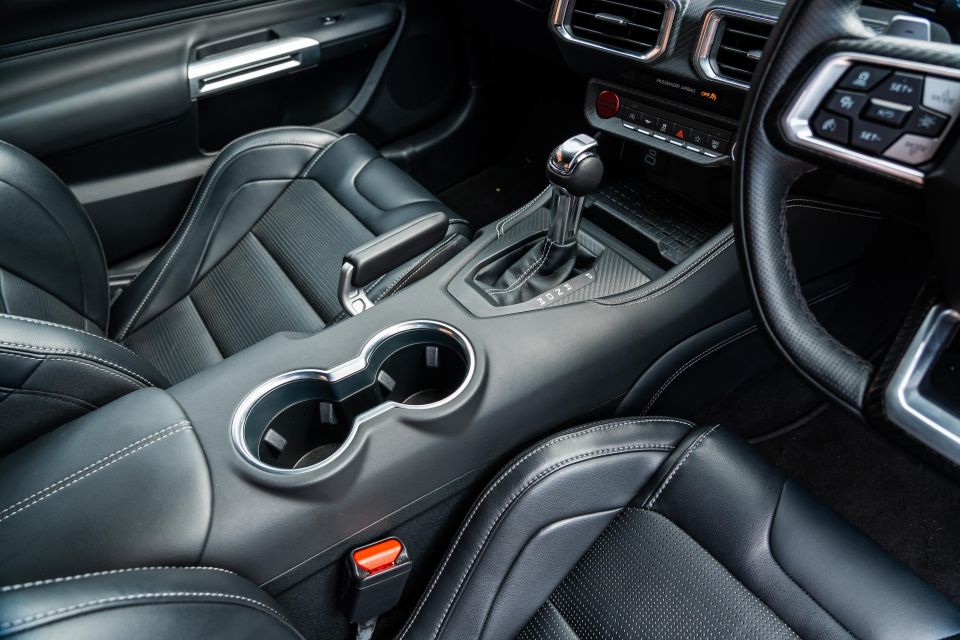
At the base of the centre stack, there are a range of physical shortcut buttons for features like the MyMustang page on the touchscreen, which allows you to change certain car features, plus a configurable button. I also appreciate the physical volume knob and the prominent red starter button.
Looking beyond the wraparound display cluster, it’s obvious this new Mustang is based on the previous S550 model. Almost all of the centre console is identical, down to the gear selector, cupholders and under-armrest storage box.
This means if you put drinks in the cupholders they are still in the way when you operate the gear selector, plus some of the finishes are a little scratchy and hard. Despite this, there are still a number of softer finishes in high touch-point areas.
A key change with the centre console, however, is the physical hand brake has been removed, and an electric park brake that can double as a drift hand brake has been installed instead. It’s a cool inclusion that’s very pronounced, but in everyday driving it feels like overkill.
While the Mustang’s interior is rather dark, the interior ambient lighting adds an extra element of flair. There are a number of different zones you can configure, which is fun from a personalisation standpoint.
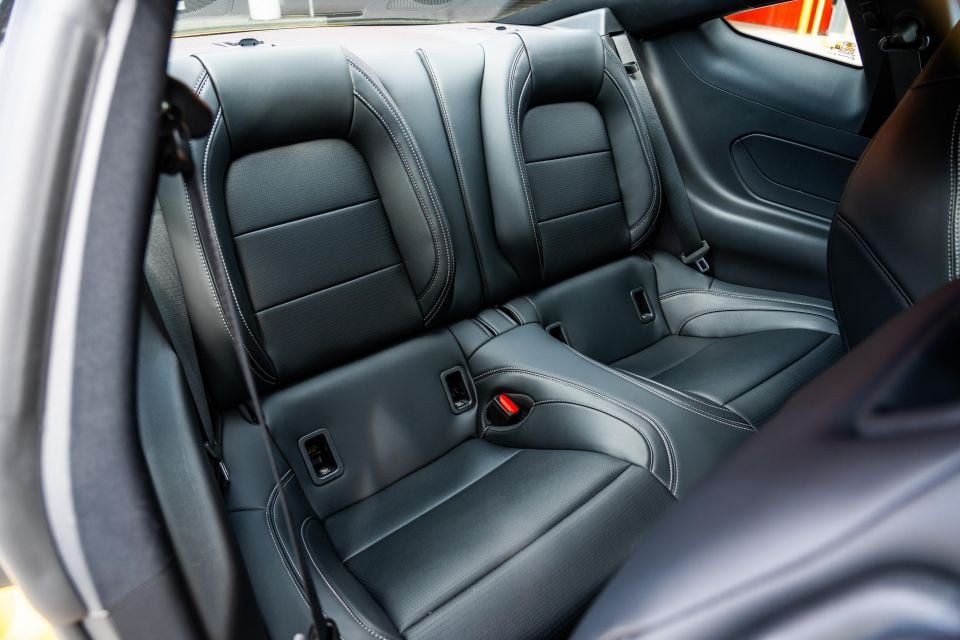
Hopping into the second row isn’t for the faint-hearted because there isn’t much space on offer. At a leggy 182cm, I can technically sit back there if the front passenger is willing to slide their seat forward, but I have to crane my neck and lean forward to ensure my head doesn’t hit the roof.
It’s not the most inviting space ever, because in addition to the lack of space, the rear glass tapers back over your head, and you get a lot of sunlight projected onto your neck as a result. This limits how suitable the rear seats are for kids.
Speaking of kids, there are two ISOFIX child-seat anchor points, as well as two top-tether points. This means if you ever need to install a child seat in the second row, you technically can.
For many buyers the second-row space will likely be used as additional storage, though it’s worth noting it isn’t covered.
At the back, the Mustang has a manual tailgate that’s light and can be opened or closed easily. Strangely, Ford doesn’t quote an official boot capacity figure, but it’s pretty big. A set of golf clubs will easily fit back there.
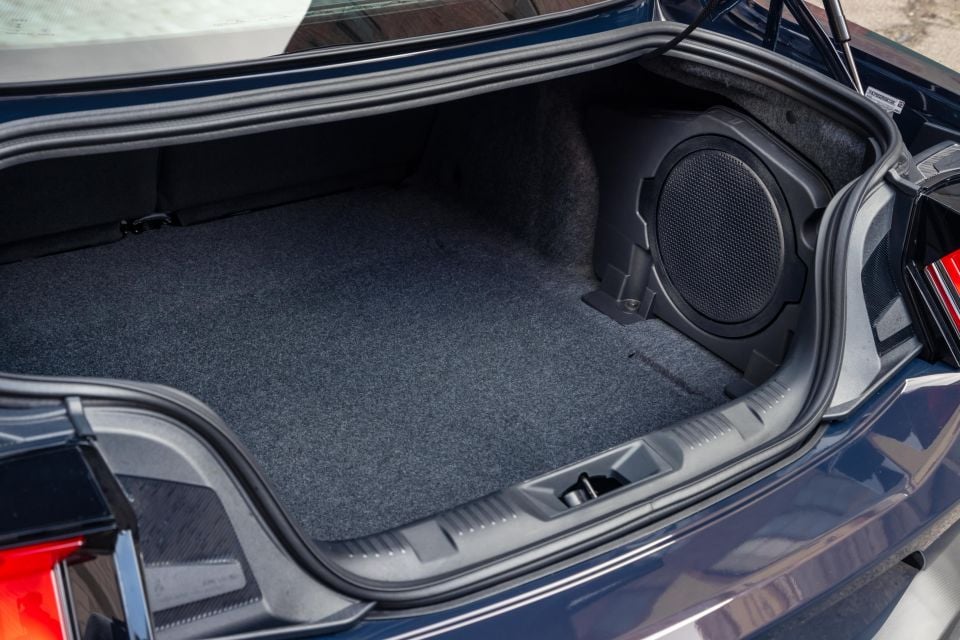
Disappointingly, however, there’s no spare tyre under the boot floor. Sure, there’s a tyre repair kit that keep help fix small tyre punctures, but this isn’t anywhere near as handy as a proper spare wheel or even a space-saver, especially if you have a blowout in the middle of nowhere.
| Dimensions | Ford Mustang GT Fastback |
|---|---|
| Length | 4811mm |
| Width | 2097mm |
| Height | 1414mm |
| Wheelbase | 2719mm |
| Cargo capacity | TBC |
If you want to see how the Ford Mustang lines up against the competition, check out our comparison tool
The Ford Mustang GT is still powered by a 5.0-litre naturally aspirated V8, this time producing 345kW of power and 550Nm of torque and mated with either a six-speed manual or a 10-speed automatic transmission.
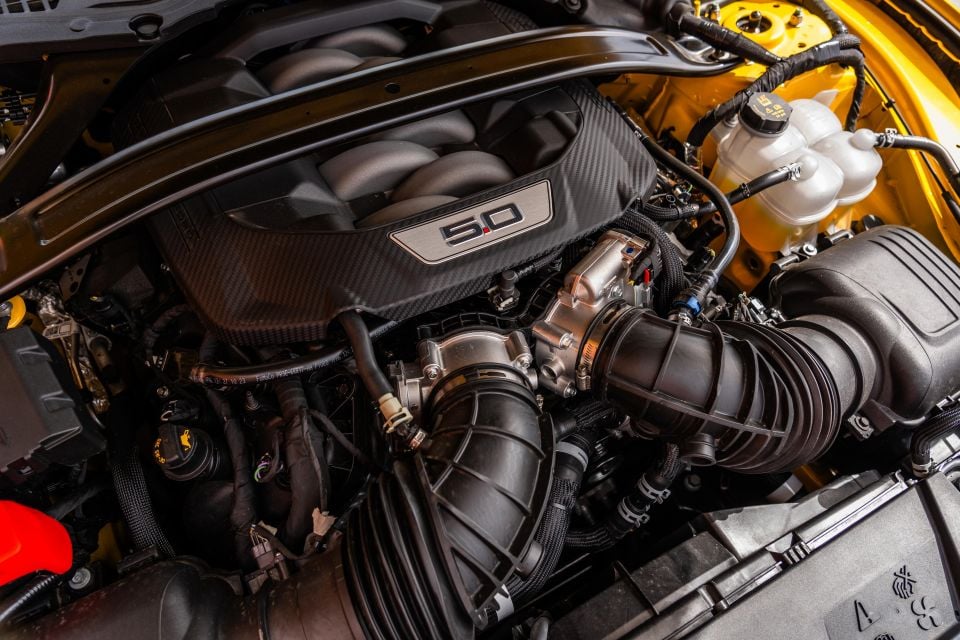
That means that, for Australia, the famed Coyote V8 is up 6kW but down 6Nm over its predecessor, and well down on the 358kW/563Nm outputs of US-spec Mustang GTs, just as our Dark Horse’s 349kW/548Nm outputs are down from the 373kW/567Nm figures of the North American version, due to a different exhaust manifold and engine calibration.
| Specifications | Ford Mustang GT |
|---|---|
| Engine | 5.0L V8 petrol |
| Power | 345kW @ 7250rpm |
| Torque | 550Nm @ 4850rpm |
| Transmission | 6-speed manual 10-speed auto |
| Drive type | RWD |
| Weight (kerb) | 1813kg (manual) 1841kg (auto) |
| Fuel economy (claimed) | 13.6L/100km (manual) 12.8L/100km (auto) |
| Fuel economy (as tested) | 14.7L/100km (380km auto) |
| Fuel tank capacity | 61L |
| Fuel requirement | 98-octane premium unleaded |
| CO2 emissions | 310g/km (manual) 293g/km (auto) |
If you want to see how the Ford Mustang lines up against the competition, check out our comparison tool
Firing up the Mustang GT, there’s a big V8 bellow when it first turns over, especially when it’s cold. The engine then settles into a beautiful chugging idle that’s very loud and addictive. V8 die-hards will be pleased.

But if you’re conscious of your neighbours and don’t want to wake them up when starting the car on an early morning, you can select the ‘Quiet’ mode that shuts the active valve in the exhaust. It does make a noticeable difference, especially in the cabin.
Setting off, the 5.0-litre Coyote V8 is definitely the star of the show here. It has so much character and it brings endless fun and big smiles, even in everyday commuting.
There’s oodles of power and torque available with even a slight press of the accelerator, but you do need to be careful because it doesn’t take much for the rear wheels to begin to break traction.
You’re able to select a wide array of drive modes including ‘Normal’, ‘Sport’, ‘Track’, with the latter only meant for track use as it limits traction control. There’s also a ‘Custom’ drive mode that allows you to personalise the engine calibration, exhaust mode, steering feel and, in this car, the adaptive dampers, among other minor things.
Letting the car rev out, even in ‘Normal’ mode, is so fun as the engine starts to sing from 3000rpm. Getting closer to redline, the singing turns into a scream – like a demon is on the brink of escaping from under the bonnet.

‘Sport’ mode takes things to the next level, making the car feel more focused and dialled in. On public roads, however, it feels like you barely scratch the surface of the car’s capability. The exhaust note also takes on a deeper, grumbly tone with the active valve opened wider.
The six-speed manual perfectly suits this car; in fact, it seems the most appropriate option here, from an engaging sports car standpoint.
The clutch takeup point and gear shifting is easy to understand, though it lacks the overtly notchy feel of the Dark Horse’s available Tremec six-speed manual transmission. I personally didn’t mind this though, because it makes the GT’s manual a little easier to live with on the day-to-day as it doesn’t take as much effort to shift gears.
A cool feature available in the GT manual is auto hold, so you don’t need to keep your foot on the brake at the traffic lights. It’s also available in the automatic, but it’s a rarity in manual-equipped vehicles.
For those who don’t want the occasionally laborious process of driving a manual car, especially in heavy traffic, the automatic is a good alternative. It’s not quite as engaging as the manual, but you don’t have to constantly be thinking about what gear to shift into next.
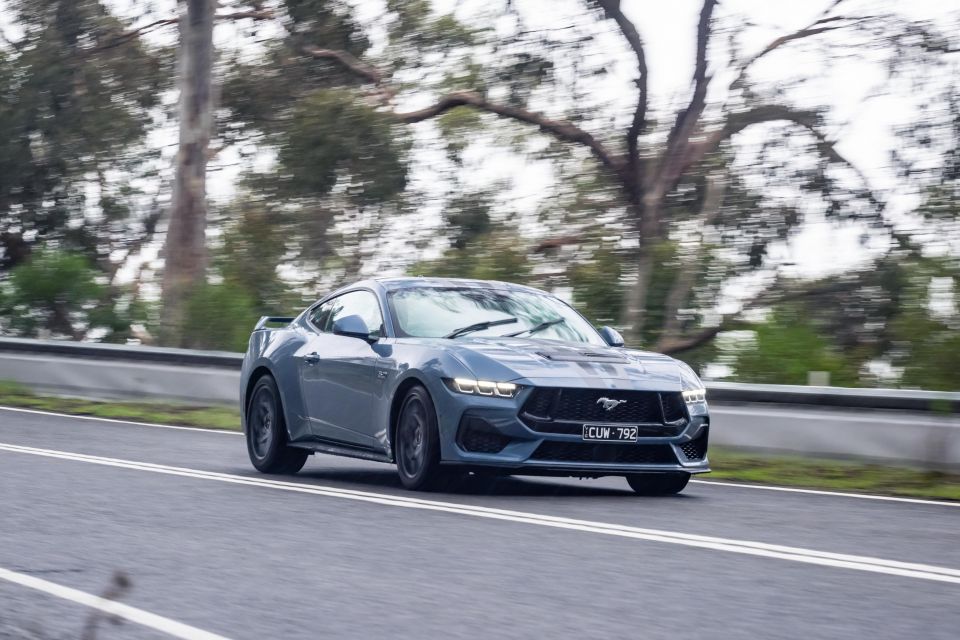
Where expert car reviews meet expert car buying – CarExpert gives you trusted advice, personalised service and real savings on your next new car.
One of the few catches with this automatic transmission, however, is that it has 10 gear ratios, and this can sometimes be just too many.
In normal driving, the GT automatic is constantly shuffling up or down through the gears and, although it shifts seamlessly, unless you’re accelerating it opts for the highest gear possible to minimise fuel consumption. This dulls the theatrical experience the V8 provides.
If you do take control of the gears and shift manually via the paddle shifters, you need to flick them very often as the gear spacing is narrow.
Both our Mustang GT testers were equipped with the optional MagneRide adaptive suspension damping system. This is a must-have because it elevates the driving experience from both a comfort and dynamic standpoint.
In ‘Normal’ mode, the suspension errs on the sportier side, but the adaptive dampers better iron out pimply urban roads, and round off harsher bumps nicely. You can still feel the road beneath you though.

Another feature MagneRide allows is pothole detection, which is a wonder to behold. When the car detects a pothole it cranks up the rebound damping to its stiffest setting to reduce the amount of wheel drop inside the pothole. It also works well at rounding out speed bumps.
In ‘Sport’ mode, the damping is obviously firmer but can make the suspension feel more jittery. It feels like a cat waiting to pounce once you get a straight section of road on which to unleash all of the power on tap here.
Regardless of the drive mode, the steering is on the firmer side. It’s not overly stiff, but if you do need to do some tight manoeuvring you’ll quickly build up your biceps.
In addition to the normal steering calibration, there are also light and sport steering modes that can be selected directly from the steering wheel. The settings only alter how easy or hard the wheel is to turn at higher speeds, so the Mustang still isn’t the easiest car to park.
Speaking of which, there are front and rear parking sensors as standard, which is good, but strangely there’s only a reversing camera. I would appreciate a surround-view camera, which would provide peace of mind knowing you won’t scrape the fancy alloy wheels when parallel parking.
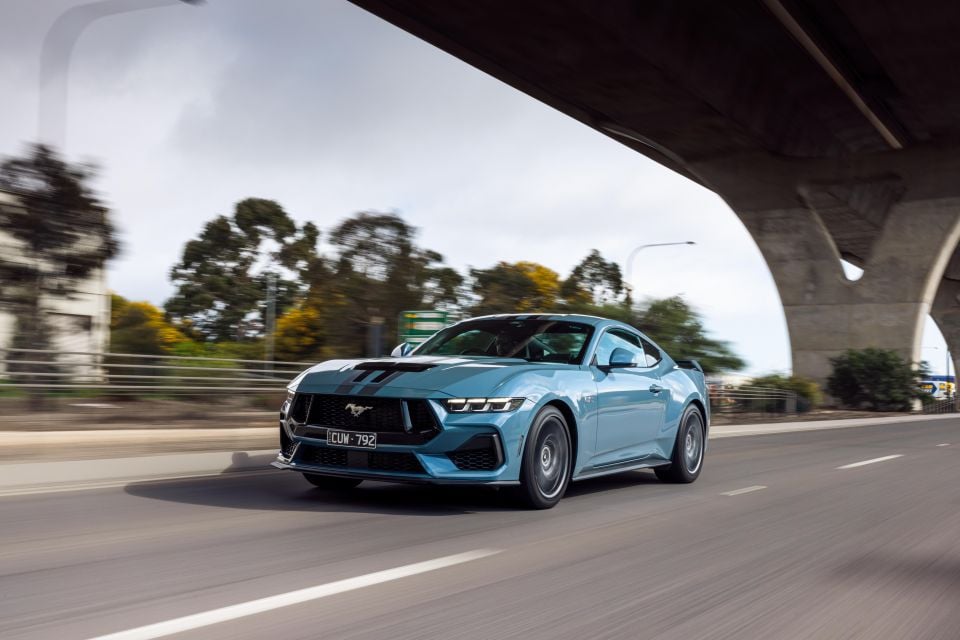
Getting out on the open road is where the Mustang stretches its legs and feels most at home. This car is a beautiful tourer that settles comfortably, yet on tighter country roads it easily fills the lane, making you breathe in when you meet an oncoming truck.
Here, the automatic quickly slots into top gear, yet it’ll happily drop quite a number of gears to get things hustling. The manual, on the other hand, allows you to take direct control of how much the car is revving and therefore how good it sounds.
Even more so than the auto via its paddle shifters, I do like how much engine braking the GT manual has when slotted into a lower gear at higher speeds. This means you don’t need to rely and the brakes as much.
Speaking of the brakes, the Brembo units are very impressive at speed, but around town they seem like overkill and feel a little too bitey. However, I’m a fan of the red-painted brake calipers that come as part of the MagneRide suspension package.
Both the manual and automatic Mustang GT are very dynamic and you can tell they want to be driven hard. There’s so much grip available and that allows you take corners faster, but you also have to remember this a V8-powered rear-drive beast.
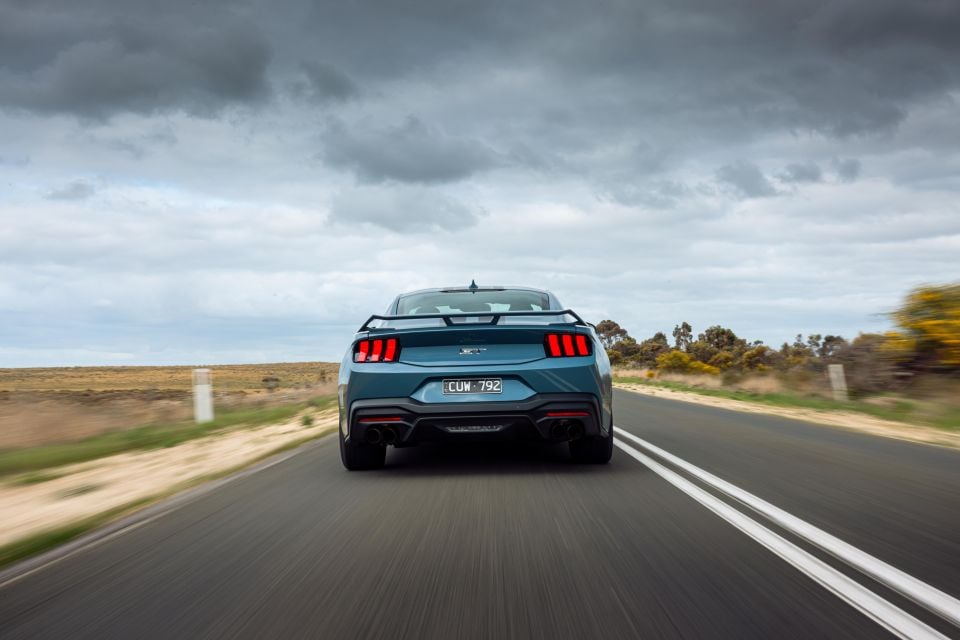
It takes a racetrack to reveal the Mustang actually has a very well-sorted chassis that can be steered on the throttle, but one of the few detractors from a dynamic on-road driving perspective is that it can still feel a tad unwieldy on tighter, twisty roads. It’s not quite as nimble as lighter sports cars, but it makes up for that with outright V8 grunt.
On the safety front, adaptive cruise control is standard on both the GT manual and automatic. The only difference between the two systems is the manual doesn’t come with a stop-and-go function.
In both cars the adaptive cruise is good at keeping a consistent distance between you and the car ahead of you. It also doesn’t freak out and slam on the brakes when a car merges in front of you.
The lane-keep assist is handy and never too intrusive during normal commuting, though on tighter roads with poor lane markings it can get lost. In these circumstances, I found it best to switch it off because it kept vibrating and tugging at the wheel.
The GT automatic also picks up a lane centring function which works in conjunction with the adaptive cruise system. It’s nice to have on longer highway and freeway drives as it helps reduce driver fatigue. On regular two-lane roads, however, the system can be a little overbearing and wants to direct the steering efforts just a bit too much.
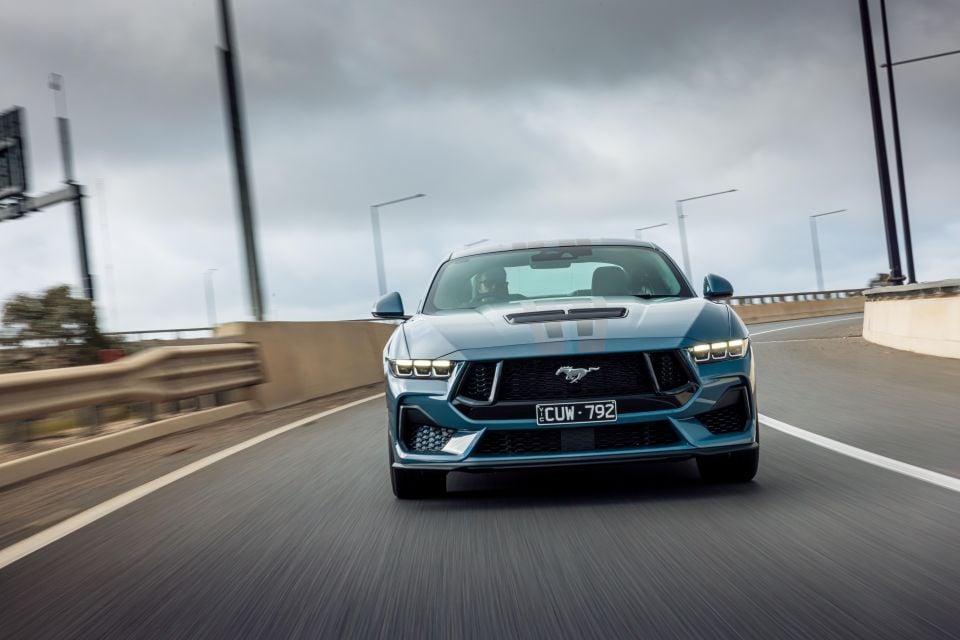
Lastly, the standard LED headlights are bright, which is handy for travelling along dimly-lit rural roads. There’s also an auto high-beam function that dips the lights when it detects either headlights or tail-lights in front of you.
If you want to see how the Ford Mustang lines up against the competition, check out our comparison tool
The 2025 Ford Mustang range is now only offered in two trim levels, after all Dark Horse vehicles were snapped up.
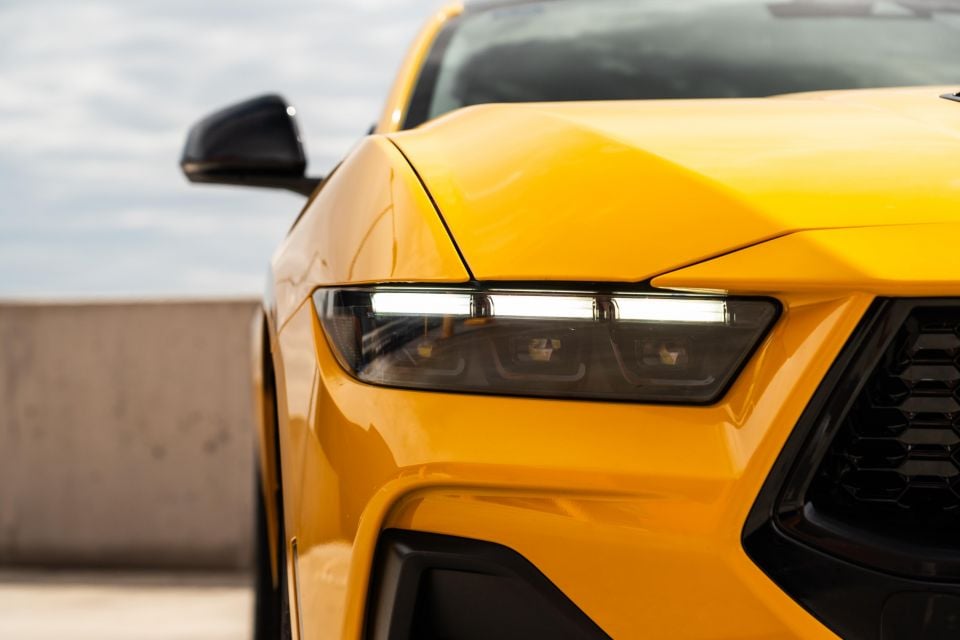

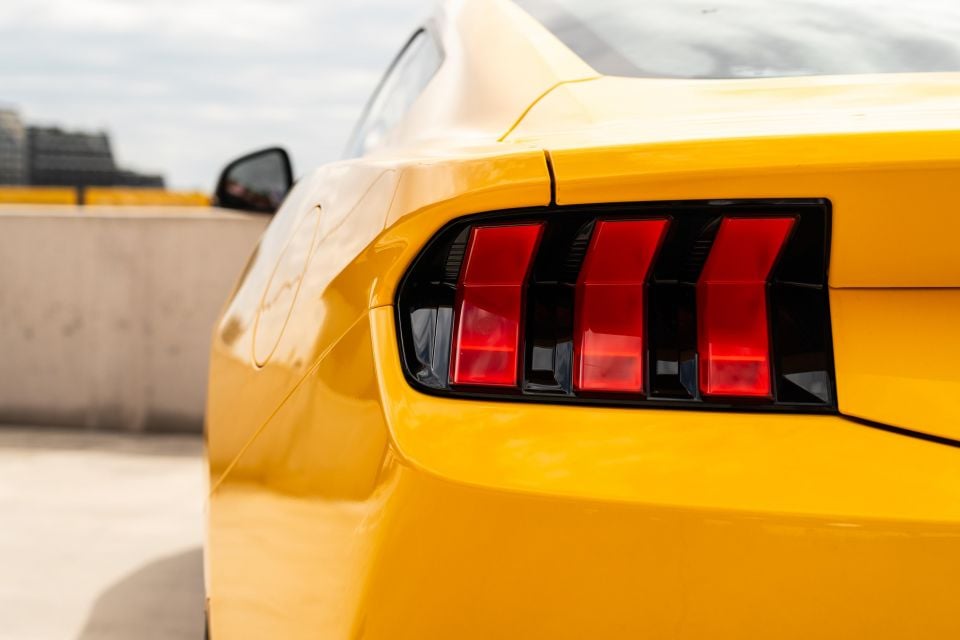

2025 Ford Mustang EcoBoost equipment highlights:
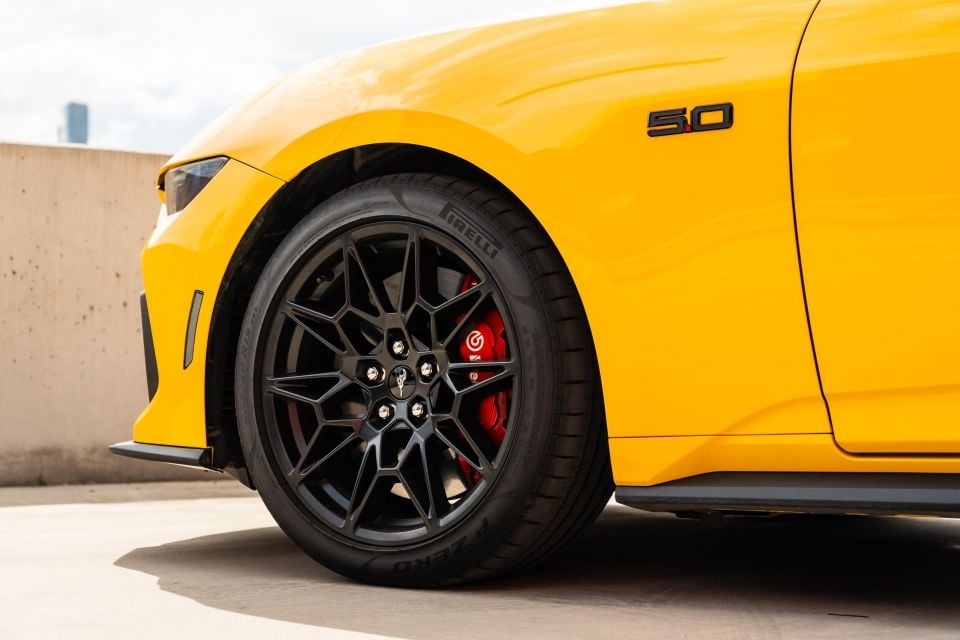
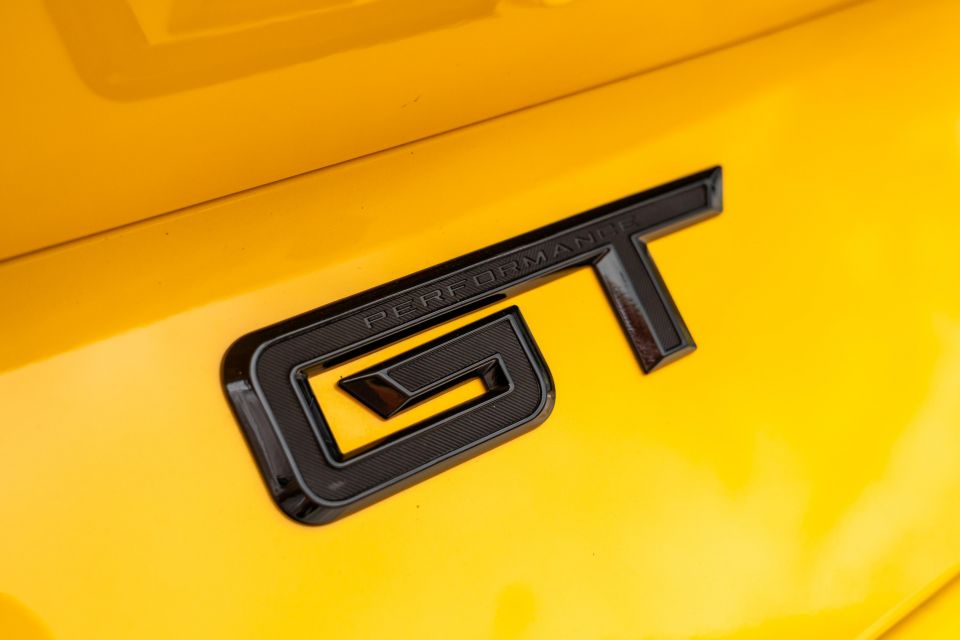
Mustang GT adds:
If you want to see how the Ford Mustang lines up against the competition, check out our comparison tool
A number of option packages and individual parts are available for the 2025 Ford Mustang.
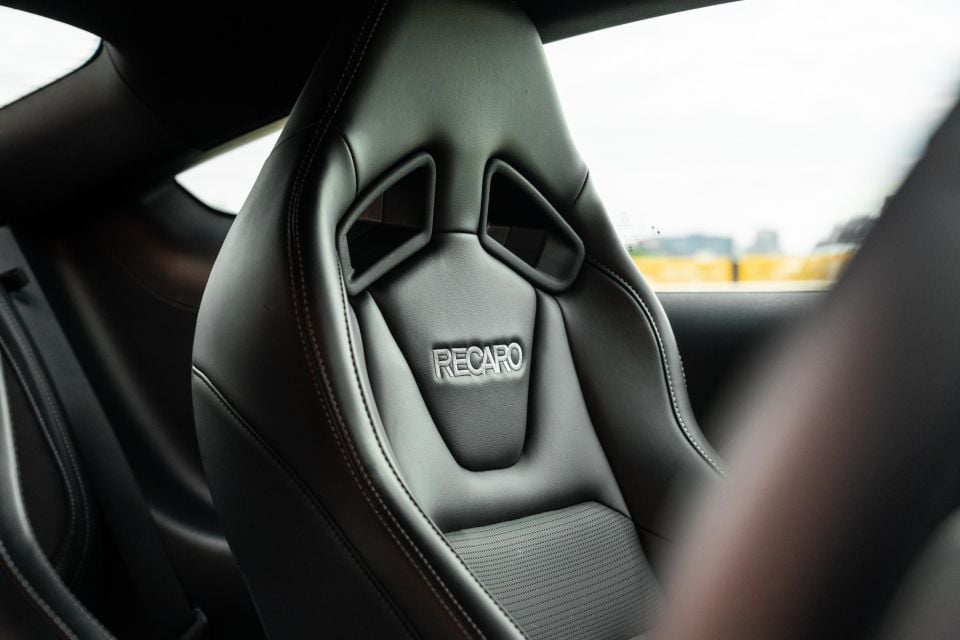
Bronze Appearance Pack – $1500 pre-Luxury Car Tax (LCT), $1950 including LCT
EcoBoost and GT Appearance Packs (not available with MagneRide or Recaro seats) – $1500 excl. LCT, $1950 inc. LCT
Other options include:
Our MY24 tester was fitted with the optional Black Pack, which is no longer available.
If you want to see how the Ford Mustang lines up against the competition, check out our comparison tool
Race Red and Oxford White remain the only no-cost exterior paint finishes.
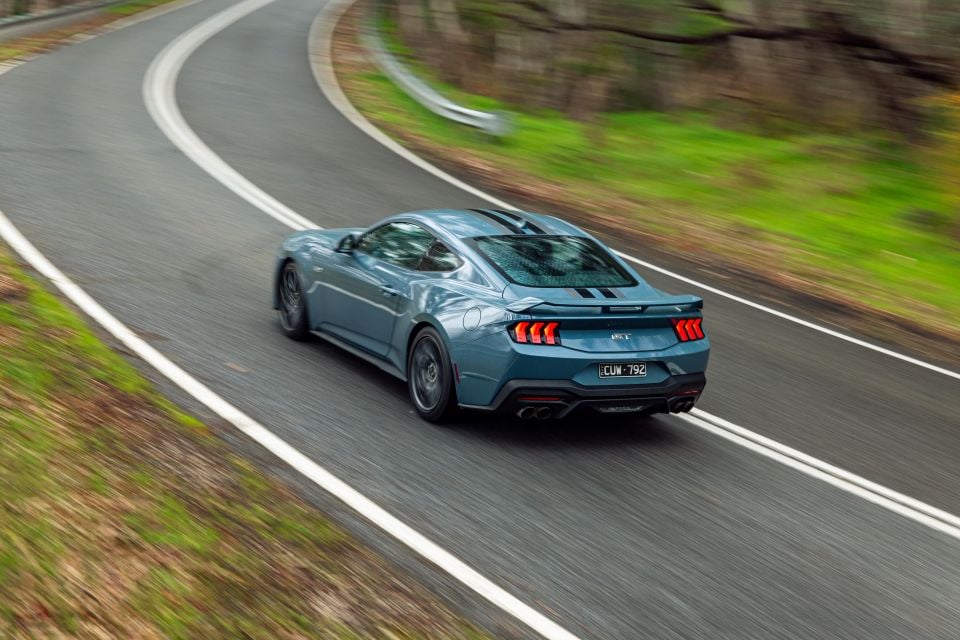
The following premium finishes are available for an extra $910:
Atlas Blue, Dark Matter Grey, Rapid Red, and Yellow Splash have been discontinued for the 2025 model year. Our tester is finished in the latter.
The 2025 Ford Mustang has yet to be tested by ANCAP or Euro NCAP.
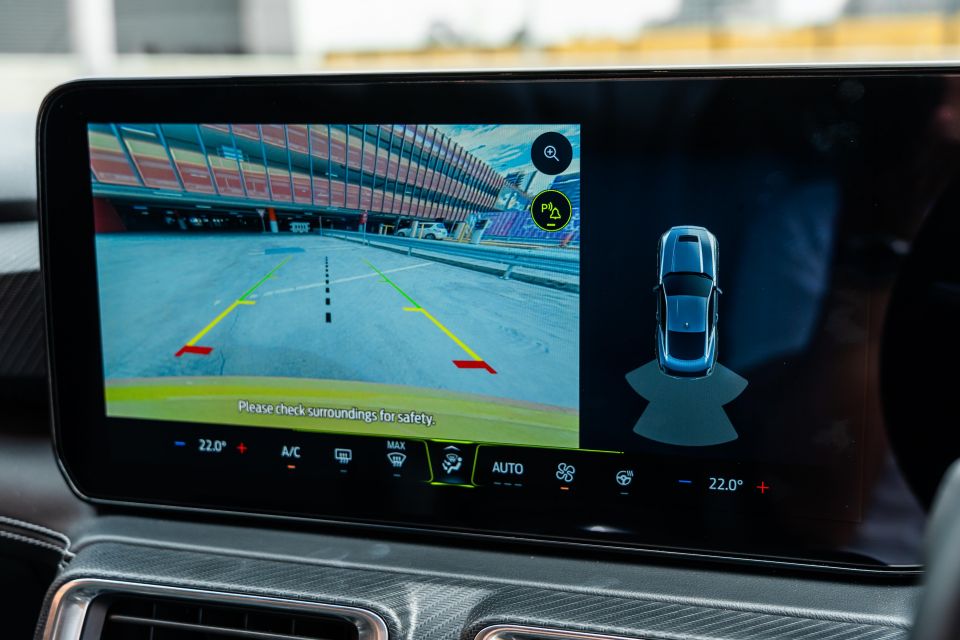
Standard safety equipment includes:
If you want to see how the Ford Mustang lines up against the competition, check out our comparison tool
The 2025 Ford Mustang is backed by a five-year, unlimited-kilometre warranty.
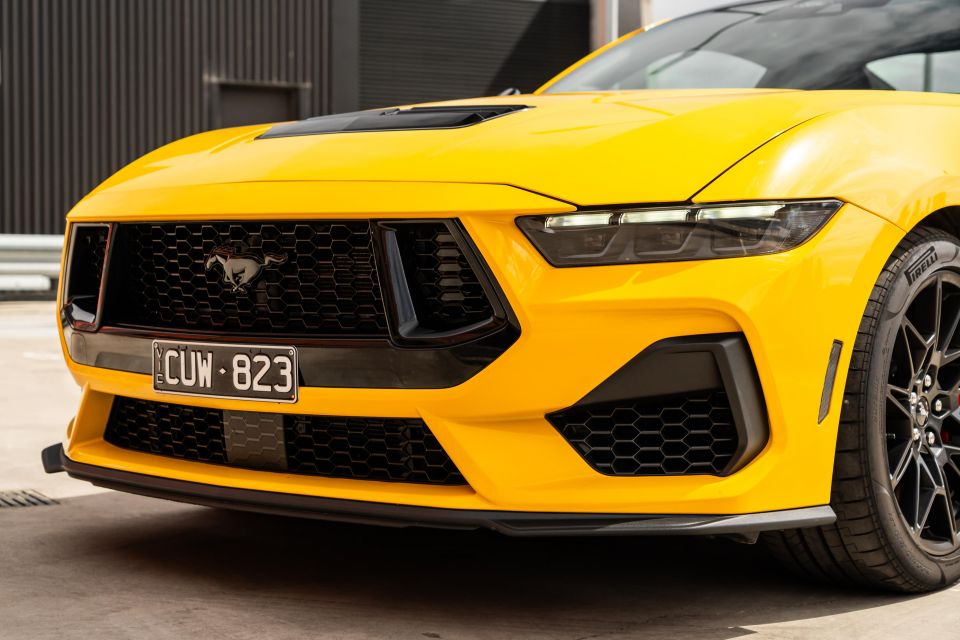
| Servicing and Warranty | Ford Mustang |
|---|---|
| Warranty | 5 years, unlimited kilometres |
| Roadside assistance | Up to 7 years (service activated) |
| Service intervals | 12 months or 15,000 kilometres |
| Capped-price servicing | 4 years |
| Total capped-price service cost | $1516 |
If you want to see how the Ford Mustang lines up against the competition, check out our comparison tool
Buy your new car without the stress. It's fast, simple and completely free.

Great service from Travis and team, second time I have used this business would not hesitate to recommend them to anyone
Craig C.
Purchased a Ford Ranger in Sunshine Coast, QLD
CarExpert helped Craig save $7,224 on his Ford Ranger, now let us save you on your next new car.
Get your BEST priceThe Mustang is the last of a dying breed.
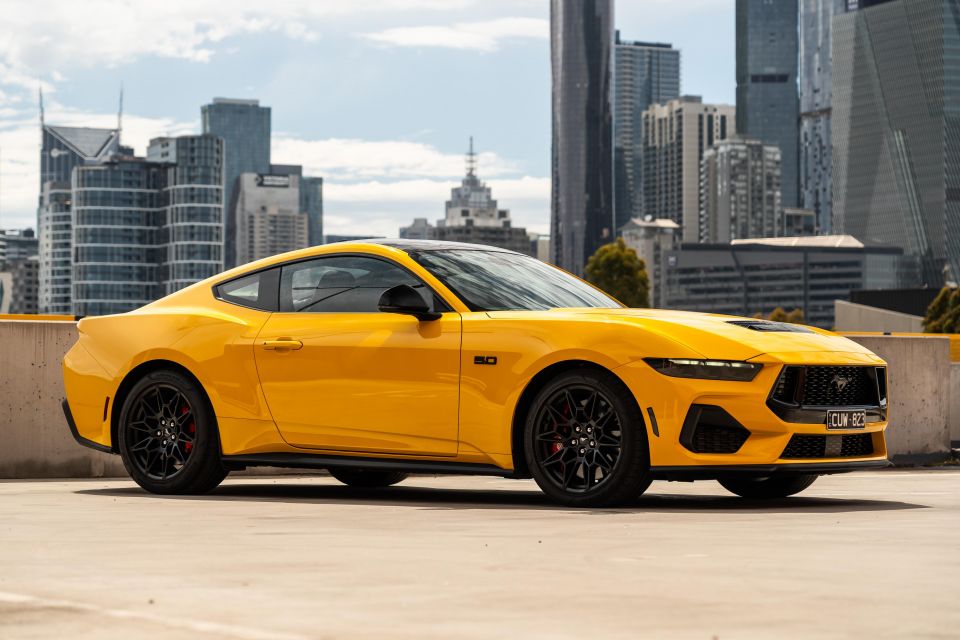
The age of V8-powered sports cars is slowly but surely coming to an end, especially among mainstream brands, and car enthusiasts should be thankful Ford has continued to produce the Mustang, let alone make a new-generation version of it. The same can’t be said of two-door American muscle car rivals like the Chevrolet Camaro or Dodge Challenger, whish were never global models like the Blue Oval’s original pony car.
Sure, this S650-generation Mustang is essentially a reworked S550, but the best elements of the car have been retained, including Ford’s iconic 5.0-litre Coyote V8.
This engine is such a beast. It had me obsessed from the first cold start, and kept me enamoured with its glorious soundtrack as I ripped the revs beyond 4000rpm. Even in regular driving while commuting, the V8 always makes its presence known with its guttural engine and exhaust note.
The Mustang GT begs to be driven hard and rewards you for doing so on twisty roads, where its dynamic envelope is way too broad to test without risking your license. In order to experience the full feature set, you need to take this car to a racetrack.
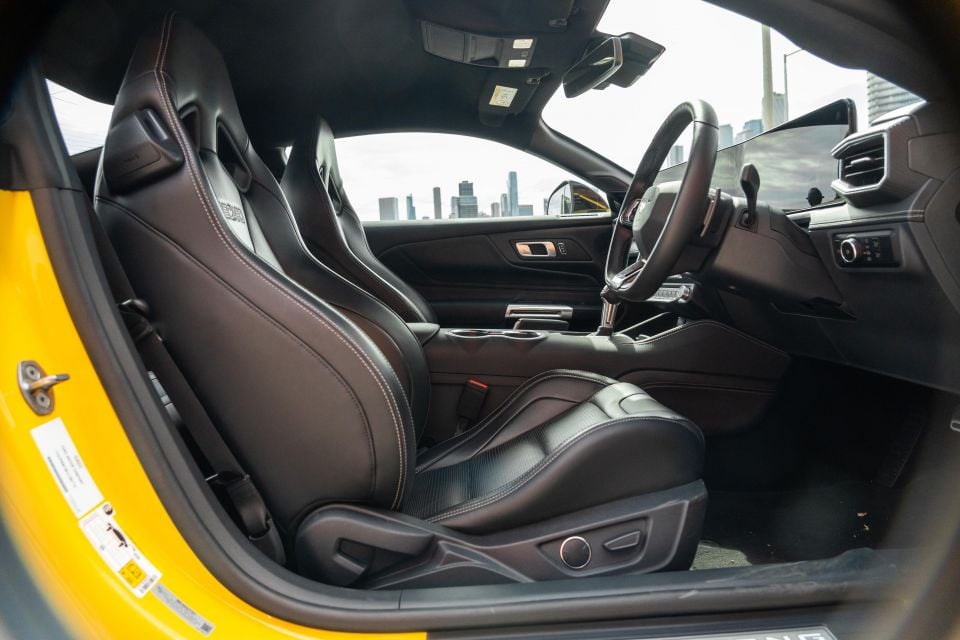
While the new interior layout has lost its retro look compared to the previous model, I appreciate the more up-to-date technology. The screens are bright and high-res, and the wraparound display cluster creates a cockpit feel for the driver.
From an interior ergonomics, standpoint, however there are some bugbears. Having to use the touchscreen for more functions is counterintuitive, the cupholders are still in the way of your arm when changing gears, and the handbrake is still on the opposite side of the centre console.
Lastly there’s the price, which keeps going up. Ford can really charge what it wants for the Mustang GT now, given it’s one of the few remaining V8 sports cars. But at about $90k drive-away depending on the state you live in, it’s still cheaper than rear-drive six-cylinder M2, Z Nismo and Supra GTS.
So it sounds like a bit of a bargain to me, especially when you consider the next most affordable V8 sports car is the Corvette Stingray, which will cost you more than $200k to park in your driveway.
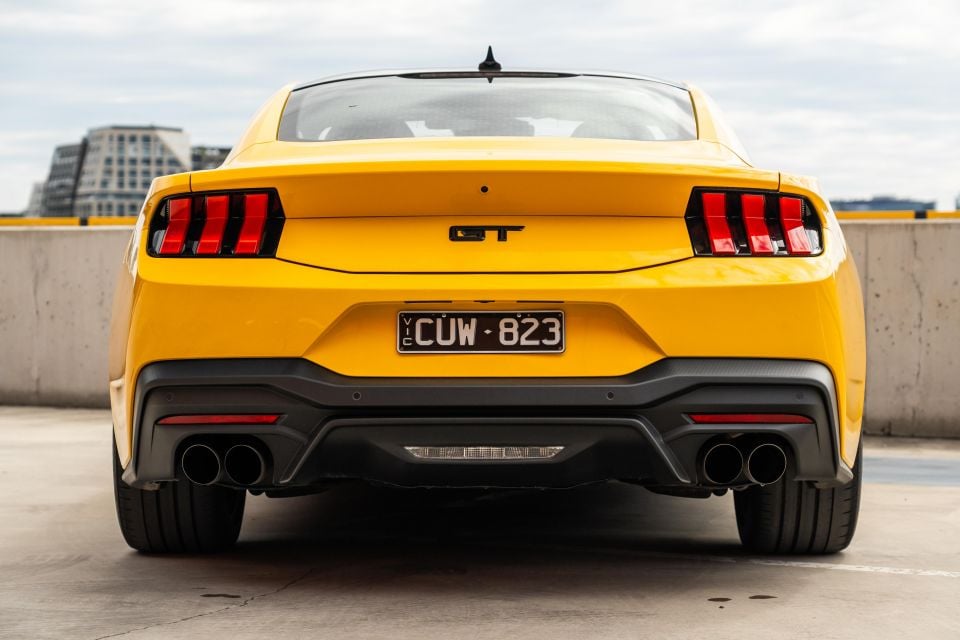
Interested in buying a Ford Mustang? Get in touch with one of CarExpert’s trusted dealers here
Click the images for the full gallery
MORE: Everything Ford Mustang
Where expert car reviews meet expert car buying – CarExpert gives you trusted advice, personalised service and real savings on your next new car.
Jack Quick is an automotive journalist based in Melbourne. Jack studied journalism and photography at Deakin University in Burwood, and previously represented the university in dance nationally. In his spare time, he loves to pump Charli XCX and play a bit of Grand Theft Auto. He’s also the proud owner of a blue, manual 2020 Suzuki Jimny.


William Stopford
2 Months Ago
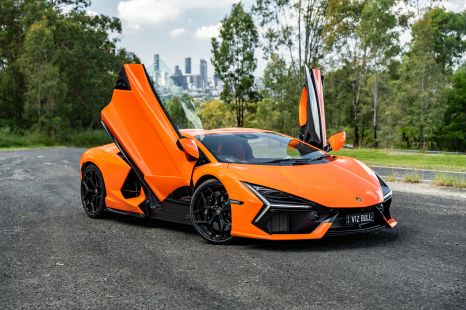

Alborz Fallah
2 Months Ago
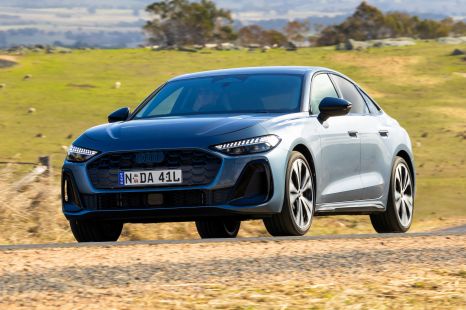

James Wong
1 Month Ago
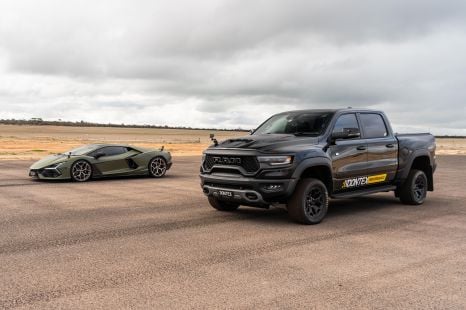

Paul Maric
27 Days Ago
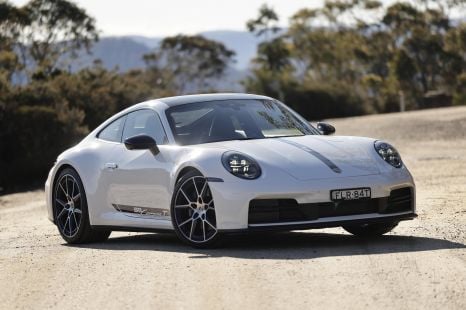

Matt Campbell
17 Days Ago
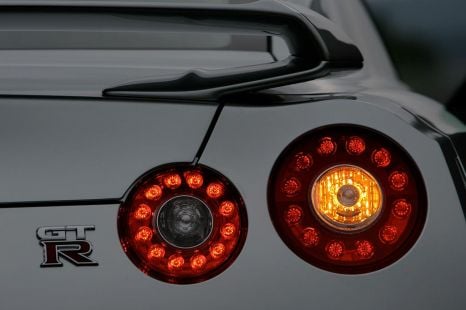

Damion Smy
10 Days Ago